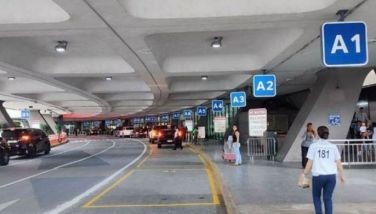Peso seen sliding to 55:$1 by H1 next year
December 6, 2001 | 12:00am
The peso is expected to soften further and slide down to 55 to the US dollar in the first semester of next year in the face of weak exports brought about by the lingering global economic downturn.
"That is not too far-fetched, especially if capital inflows dry up, both in the public and private sector, "Antonio Agcaoili, head of the Treasury department of the Asia United Bank (AUB), said.
Agcaoili said the peso could skid to 55 versus the greenback in the first semester or late first quarter next year since the economy is not expected to make a real turnaround.
Compounding this is that a number of offshore borrowings, both from the public and private sector, will be maturing next year.
"This could lead to a bunching up of maturities. At the same time, inflows could be difficult because of the dearth in fresh investments," Agcoali said.
At the same time, exports are seen to further contract next year as the country’s major trading partners are not expected to make a fast recovery.
On the upside, Agcaoili said the recent adjustment or trimming of the overnight key rates of the Bangko Sentral ng Pilipinas (BSP), along with plans to further cut banks’ reserve requirements, should result in lower interest rates that could in turn, encourage more economic activity.
"The recent announcement by the central bank that it is also planning to cut down banks’ reserve requirements will spur the local economy and push banks to lend more aggressively," Agcaoili said.
The BSP also said previously it is mulling adjustments in the mix of required deposit reserves of commercial banks.
The Monetary Board (MB), the policy-making body of the central bank is studying the possibility of fine-tuning the mandated reserves as well as the liquidity reserves on deposits.
As implemented, the banks must set aside nine centavos as mandatory reserves and another 11 centavos as liquidity reserves for every peso generated as deposits to ensure clients have access to their money at all times.
Officials said a cut on liquidity reserves, or that portion of deposits the banks do not lend out but invest instead in government securities, seems likely given that inflation went down further in November to 4.4 percent.
"That is not too far-fetched, especially if capital inflows dry up, both in the public and private sector, "Antonio Agcaoili, head of the Treasury department of the Asia United Bank (AUB), said.
Agcaoili said the peso could skid to 55 versus the greenback in the first semester or late first quarter next year since the economy is not expected to make a real turnaround.
Compounding this is that a number of offshore borrowings, both from the public and private sector, will be maturing next year.
"This could lead to a bunching up of maturities. At the same time, inflows could be difficult because of the dearth in fresh investments," Agcoali said.
At the same time, exports are seen to further contract next year as the country’s major trading partners are not expected to make a fast recovery.
On the upside, Agcaoili said the recent adjustment or trimming of the overnight key rates of the Bangko Sentral ng Pilipinas (BSP), along with plans to further cut banks’ reserve requirements, should result in lower interest rates that could in turn, encourage more economic activity.
"The recent announcement by the central bank that it is also planning to cut down banks’ reserve requirements will spur the local economy and push banks to lend more aggressively," Agcaoili said.
The BSP also said previously it is mulling adjustments in the mix of required deposit reserves of commercial banks.
The Monetary Board (MB), the policy-making body of the central bank is studying the possibility of fine-tuning the mandated reserves as well as the liquidity reserves on deposits.
As implemented, the banks must set aside nine centavos as mandatory reserves and another 11 centavos as liquidity reserves for every peso generated as deposits to ensure clients have access to their money at all times.
Officials said a cut on liquidity reserves, or that portion of deposits the banks do not lend out but invest instead in government securities, seems likely given that inflation went down further in November to 4.4 percent.
BrandSpace Articles
<
>
- Latest
- Trending
Trending
Latest






























